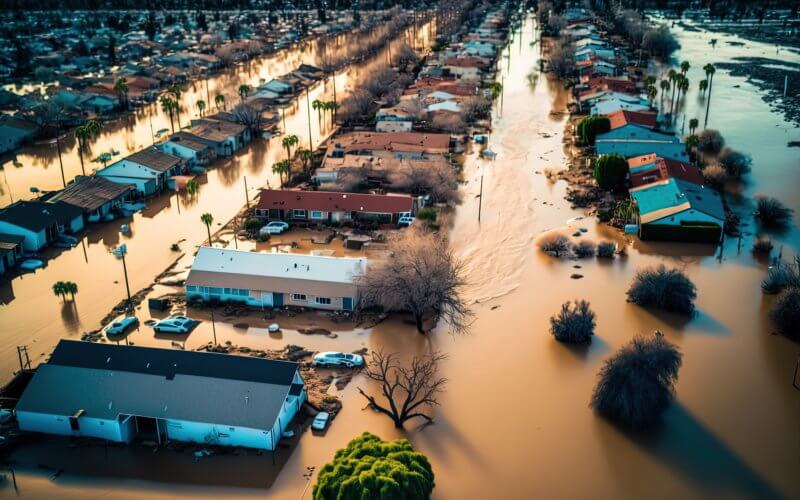
A new study by Cal State Fullerton researchers shows evidence of two epic floods that occurred within the past 500 years in Southern California during the Little Ice Age.
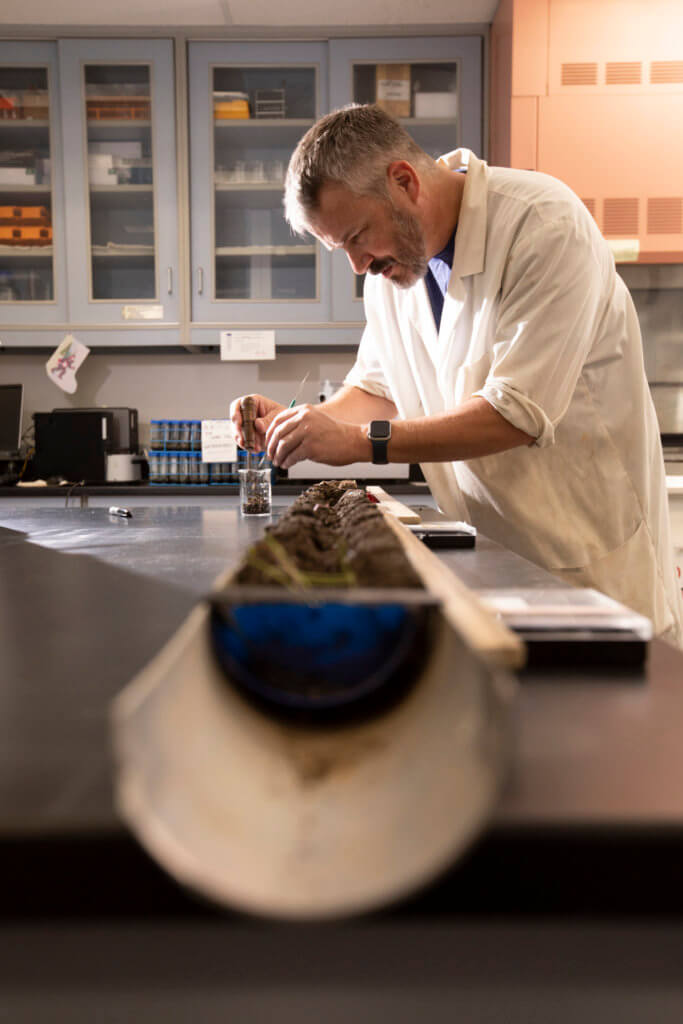
Their research is the first-ever, land-based, flood-event evidence from 1450 to 1850 — a documented period of above-average wetness in Southern California, said Matthew E. Kirby, professor of geological sciences.
According to scientists, floods — not earthquakes — represent California’s single most significant socioeconomic natural hazard risk.
“Scientists know very little about California’s flood history older than the historical record of the past 150 years,” said Kirby, who studies Earth’s climate history. “This research provides critical baseline information to prepare for future floods through understanding past flood histories.”
Climate models predict that the frequency of large flood-producing precipitation events will increase in the 21st century due to climate change.
Kirby, lead author of the research, said severe rainfall is often associated with winter season atmospheric rivers in California, which can generate hurricane-scale precipitation, creating natural hazards such as floods and landslides. The past two winters, atmospheric rivers slammed California, bringing record-breaking rain, snow, and, in some areas, flooding.
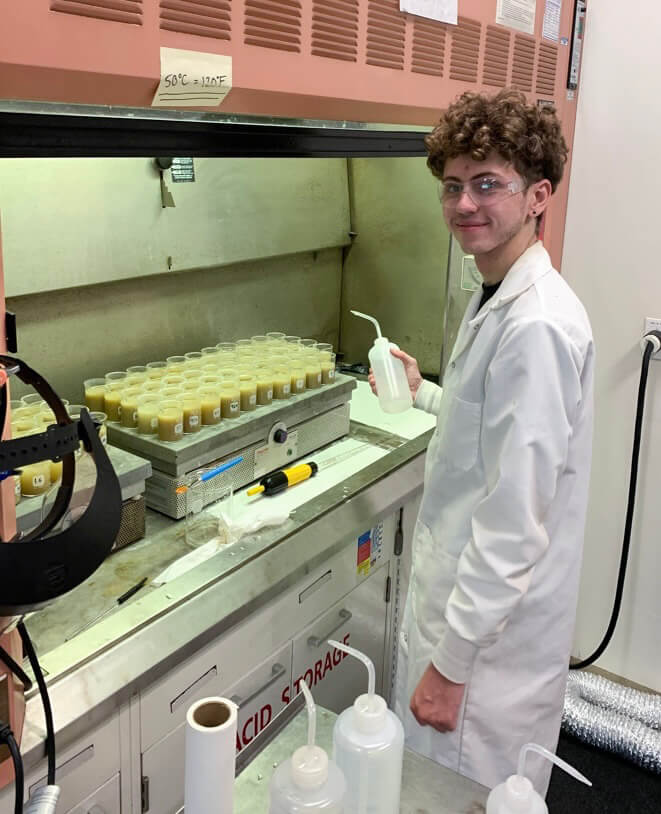
“Flooding has been on the mind of many Californians the past two winters — and part of our research found the potential floods that California may receive in the future could be magnitudes worse than recent floods,” said Samuel Hippard ’23 (B.A. earth science), one of the study’s co-authors. “Our research shows the potential risk to millions of Californians.”
The study was published in the Journal of Paleolimnology, a multidisciplinary, peer-reviewed journal focused on the reconstruction and interpretation of lake histories.
Co-authors are CSUF geological sciences faculty members Joe Carlin, Nicole Bonuso and Sinan Akçiz; alumni Dahlia Serrato ’24 (B.S. biological science-ecology and evolutionary biology) and Christian Novich ’22 (B.S. geology); and Lisa N. Martinez, a UCLA doctoral student.
The research was funded by the Southern California Earthquake Center and the university’s Project RAISE, a federally funded program to increase the number of underrepresented and low-income students in STEM majors. While in Project RAISE’s undergraduate research experience summer program for community college students, Serrato worked on the project.
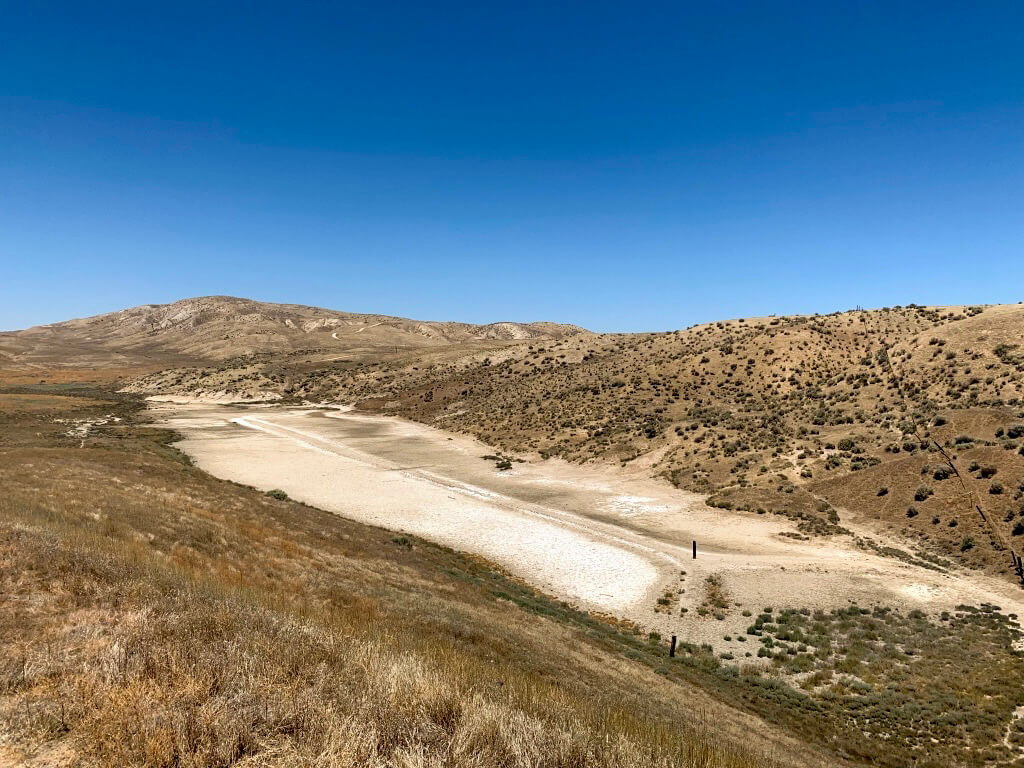
For their study, the faculty researchers collected five sediment cores from a sag pond along the San Andreas Fault in Carrizo Plain National Monument in 2021 while following safety protocols during the COVID-19 pandemic. Sag ponds are topographic depressions formed along active strike-slip faults, often resulting in a body of water.
“Sag ponds are worth our time to study because they offer an entirely new source of information, such as evidence of large floods,” Kirby said. “We’re also hoping to use these flood event histories to better constrain the timing of past earthquakes, thus our collaboration with the Southern California Earthquake Center.”
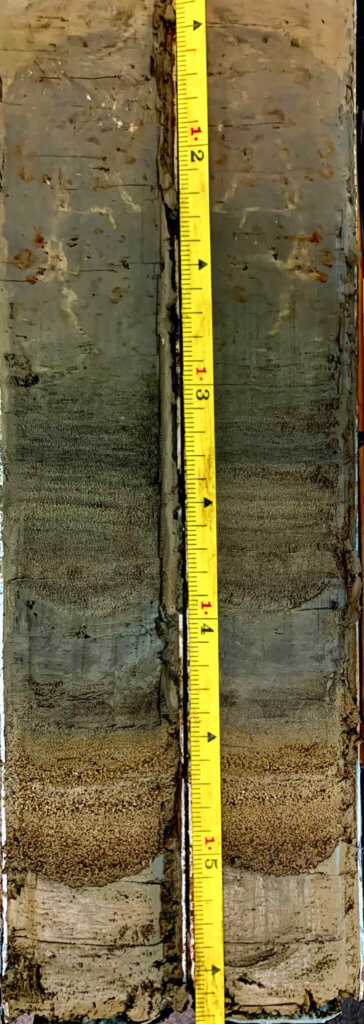
Over the past three years, Hippard and the paper’s other alumni co-authors worked in the lab to analyze the sediment cores’ properties, such as charcoal, pollen and sand content.
“The larger the grain size, the more energy is needed to erode and deposit those sediments in the basin, which, if the grains are large enough, can be a pretty good indicator of a flood event,” said Hippard, who conducted the research for his undergraduate thesis.
Hippard added that his research experience opened opportunities for him, including learning technical writing and data analysis skills to prepare for graduate school. He is studying environmental science and climate change in the master’s program at the University of Toronto, Scarborough.
“The idea of discovering climatic events through a localized snapshot of history clicked with me,” Hippard said. “Dr. Kirby provided all the necessary tools and support for me to succeed in completing my thesis.”
The CSUF researchers also uncovered a puzzling finding about the 1861-62 winter storms that devastated California. Kirby said this period of statewide flooding has been used to model the “ARkStorm scenario,” referring to a sequence of atmospheric rivers and their generation of a 1,000-year flood event.
The 1861-62 winter storms likely produced the most significant recorded flooding in the last 150 years.
“Remarkably, our research did not see clear evidence for the 1861-62 flood event, which begs the question, ‘Are we underestimating natural flood magnitude and activity by using the 1861-62 event?’
“If the answer is ‘yes,’ our research and other paleo-flood research may suggest California is not fully prepared for future floods,” Kirby said.